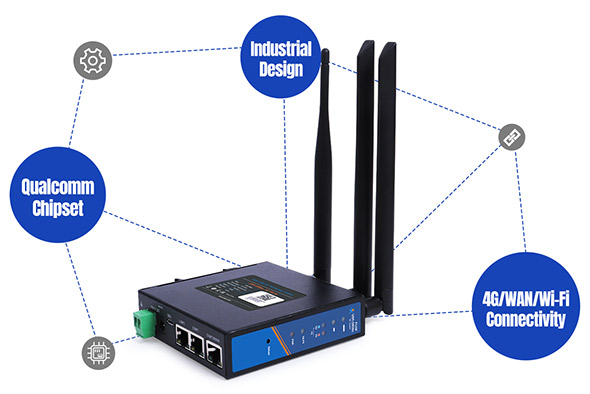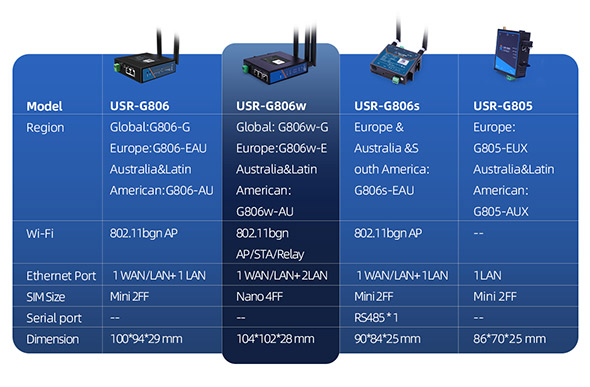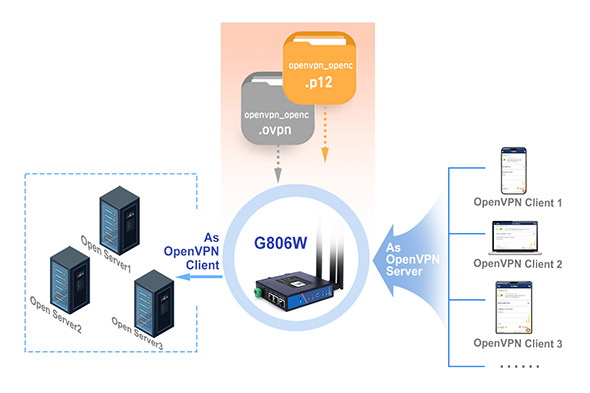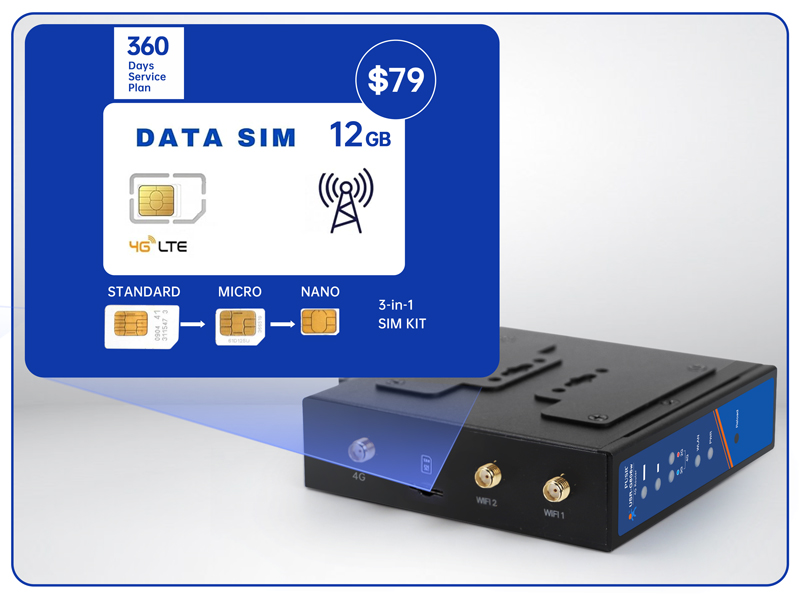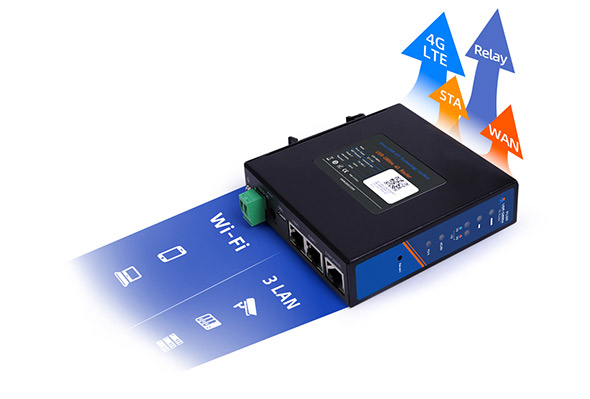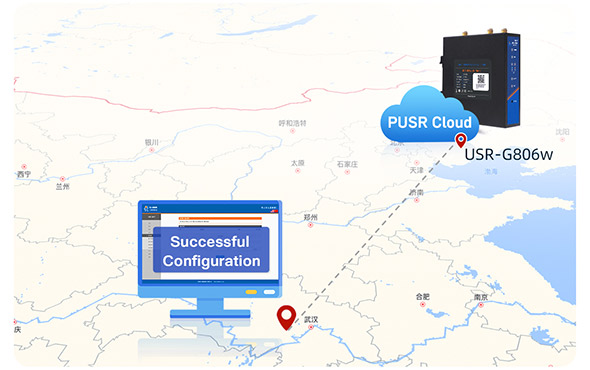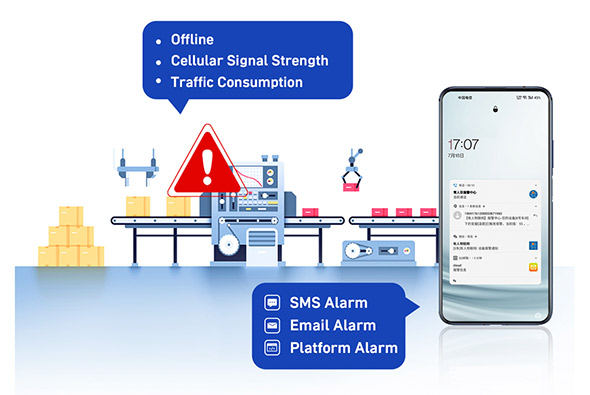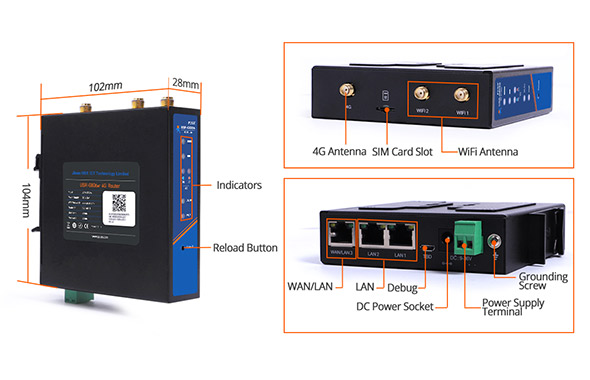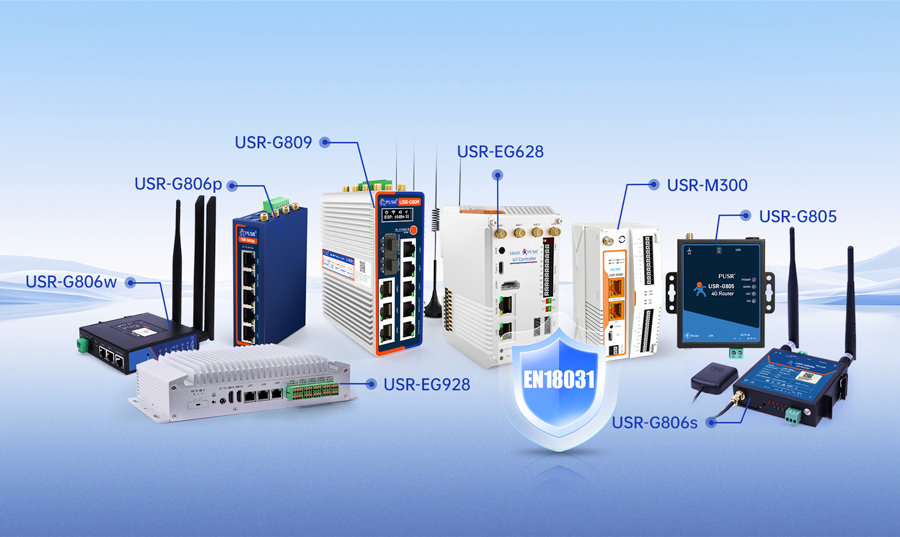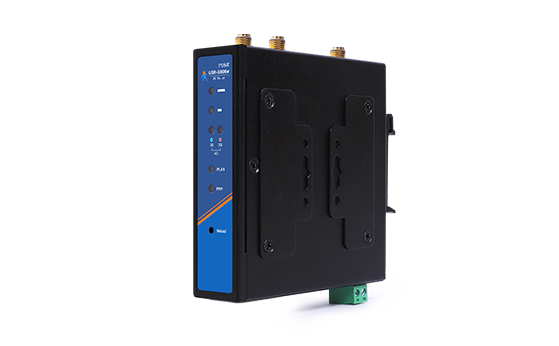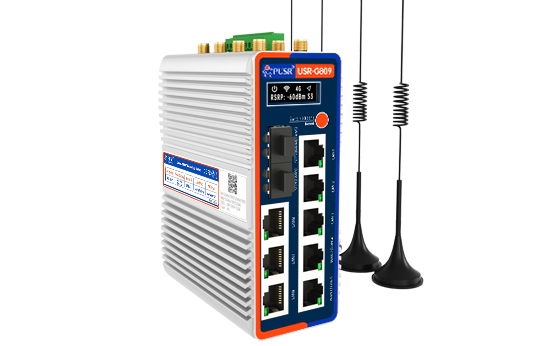At a Time When Demand for Industrial IoT and Remote Work Is Surging, Network Devices That Combine Stability, Security, and Flexibility Have Become a Necessity
At a time when demand for industrial IoT and remote work is surging, network devices that combine stability, security, and flexibility have become a necessity. The industrial VPN router G806-G launched by PUSR has become a core network device in fields such as industrial automation, remote monitoring, and smart cities, thanks to its all-industrial design, multi-protocol VPN support, and intelligent networking capabilities.
1. Core Functions and Advantages of the Industrial VPN Router G806-G
1.1 All-Industrial Design: Adapting to Extreme Environments
The industrial VPN router G806-G features a metal sheet metal enclosure with an IP30 protection rating, offering electromagnetic interference resistance (EMC Level 3), electrostatic discharge protection, and surge protection. Its operating temperature range spans from -20°C to 70°C, and it supports a wide voltage input of 9-36V, enabling it to withstand harsh industrial conditions such as dust, vibration, and high temperatures. For example, in an application at a steel plant, the device operated continuously for 18 months in a 60°C environment without failure, verifying its industrial-grade reliability.
1.2 Multi-Protocol VPN Support: Building Secure Tunnels
The router supports six major VPN protocols—PPTP, L2TP, IPSec, OpenVPN, GRE, and SSTP—to meet diverse security requirements across scenarios:
IPSec: Suitable for encrypted site-to-site communication between corporate headquarters and branches, supporting AH/ESP protocols and IKE key exchange to ensure data integrity and confidentiality.
OpenVPN: Based on SSL/TLS certificate-based mutual authentication, where both the client and server must validate each other's certificates to prevent man-in-the-middle attacks.
GRE Tunnels: Utilize generic routing encapsulation technology to enable protocol transmission across network layers, such as encapsulating IPX packets within IP tunnels for heterogeneous network interconnection.
1.3 Intelligent Networking and Backup
The device supports dual-WAN ("wired + 4G") and dual-LAN networking modes, allowing users to choose based on their needs:
Primary-Backup Switching: Automatically switches to the 4G link when the wired network is interrupted, ensuring business continuity.
Load Balancing: Enhances data transmission efficiency by distributing traffic across both wired and 4G bandwidths.
1.4 Hardware-Level Security Protection
Equipped with a built-in hardware watchdog and self-healing mechanisms, the router automatically restarts and recovers in case of system abnormalities. It supports firewalls, NAT, and blacklist/whitelist access control to block unauthorized IP addresses and port scans. Additionally, it provides SNAT/DNAT functionality to conceal internal network topologies and reduce attack surfaces.
1.5 Efficient Management Platform
The router supports multi-platform management via Web, SSH, and TELNET, enabling remote monitoring, firmware upgrades, and parameter configuration through cloud services. For instance, a logistics company managed 200 industrial VPN router G806-G devices in bulk via a cloud platform, improving operational efficiency by 70%.
2. Typical Application Scenarios for the Industrial VPN Router G806-G
2.1 Industrial Automation: Remote Monitoring and Maintenance of Equipment
In smart manufacturing factories, the industrial VPN router G806-G connects PLCs, sensors, and other devices via 4G networks, transmitting production data to the cloud in real time. VPN tunnels ensure encrypted data transmission, enabling engineers to access equipment remotely for program debugging and fault diagnosis. For example, an automotive production line leveraged the G806-G to achieve real-time collaboration among global engineers, reducing downtime by 40%.
2.2 Smart Cities: Outdoor Facility Networking
Applied in outdoor scenarios such as traffic lights and environmental monitoring stations, the industrial VPN router G806-G uses solar power and 4G connectivity to transmit data back to control centers. Its wide temperature range and lightning protection features ensure stable operation during thunderstorms. After deployment by a city's traffic management bureau, data collection accuracy reached 99.9%.
2.3 Retail Chains: Secure Interconnection of Branches
Convenience store chains establish IPSec VPNs via the industrial VPN router G806-G to encrypt and transmit cash register system and inventory data to headquarters. Branches can securely communicate with headquarters without requiring public IP addresses. After deployment, a retail brand reduced data leakage risks by 85%.
2.4 Emergency Communications: Rapid Networking at Disaster Sites
During earthquakes, floods, and other disasters, the G806-G can be quickly deployed as a temporary communication node, establishing VPNs via 4G/satellite links to provide voice and video communication support for rescue teams. A rescue team utilized the device to complete on-site network setup within 30 minutes during an operation, improving command efficiency by 60%.
3. How to Install a VPN on a Router
3.1 How to Add a VPN to a Router
Unpacking and Inspection: Verify that the device includes the router body, power adapter (DC 12V/2A), antennas (1 × 2.4G rod antenna, 1 × full-frequency suction cup antenna), SIM card tray, and user manual.
Installation Methods:
DIN Rail Mounting: Suitable for weak current boxes, secured to a 35mm standard DIN rail using side clips.
Wall Mounting: Hang the device on a wall using the rear butterfly clips.
Interface Connections:
WAN Port: Connect to a fiber optic modem or upstream router.
LAN Port: Connect to a switch or terminal device.
SIM Card: Insert a 4G card from China Mobile, China Unicom, or China Telecom, supporting APN dedicated network card configuration.
3.2 How to Set Up a VPN on a Router (Using IPSec as an Example)
Step 1: Access the Web Management Interface
Enter the default IP address (192.168.1.1) in a browser and log in with the username/password (admin/admin).
Step 2: Create a VPN Interface
Navigate to "Network" → "Interfaces" → "Add Interface" and select the protocol as "IPSec."
Step 3: Configure Parameters
Remote Address: Enter the VPN server's public IP or domain name.
Pre-Shared Key: Set an encryption key (e.g., "PUSR2025").
Local Subnet: Fill in the local network address (e.g., 192.168.1.0/24).
Remote Subnet: Fill in the peer network address (e.g., 10.0.0.0/24).
Step 4: Enable Firewall Rules
Add an inbound rule allowing the IPSec protocol (UDP 500/4500) under "Firewall" → "Rules."
Step 5: Test the Connection
Use "Diagnostics" → "Ping" to test the peer IP and confirm tunnel establishment.
3.3 Troubleshooting and Optimization
VPN Connection Failure: Verify that the pre-shared key matches and confirm that the server-side firewall allows IPSec ports.
Weak 4G Signal: Adjust the antenna angle or replace it with a high-gain directional antenna.
High CPU Usage: Close unnecessary VPN tunnels or upgrade to a higher-performance model (e.g., the G806-43 supports full-format 4G).
4. Technical Comparison and Selection Recommendations
Parameter | G806-G | Competitor A | Competitor B |
VPN Protocols | 6 types (PPTP/L2TP/IPSec, etc.) | 3 types (PPTP/L2TP/IPSec) | 4 types (missing OpenVPN) |
Operating Temperature | -20°C to 70°C | -10°C to 55°C | 0°C to 40°C |
Installation Methods | DIN rail/wall/desktop | Desktop only | Wall mount only |
Price (Reference) | $131.00 | ¥138 | ¥212 |
Selection Recommendations:
Limited Budget: Choose Competitor A, but accept limitations in functionality and environmental adaptability.
High-Temperature/Low-Temperature Scenarios: Prioritize the G806-G, as its wide temperature range reduces temperature control costs.
Multi-Protocol Requirements: The G806-G's support for OpenVPN and SSTP enables more flexible security policies.
The PUSR industrial VPN router G806-G, with its all-industrial design, multi-protocol VPN support, and intelligent networking capabilities, has become an ideal choice for industrial IoT, remote work, and emergency communications. Through this installation and configuration guide, users can quickly deploy the device to build a secure and stable network environment. In the future, with the proliferation of 5G and edge computing, upgraded versions of the G806-G (e.g., supporting 5G SA networking) will further expand its application boundaries, providing a robust network infrastructure for digital transformation.
